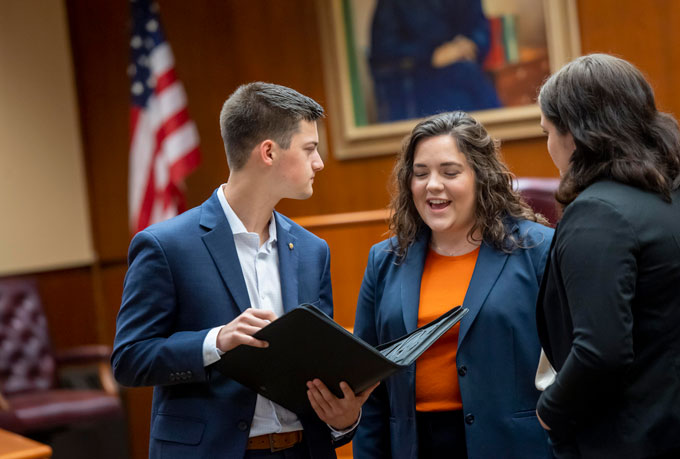Machinery and New Friends

On Wednesday, May 15th 2013 the IBIP group traveled to Caterpillar (CAT), followed by Case New Holland (CNH), and ended the day with the University of Sao Paulo (USP) ESALQ Junior Enterprise program.
We arrived at CAT in the morning and listened to a presentation from Carlos A Coso, the Director of Global Purchasing. He explained the efficiency that CAT is able to achieve due to its state of the art "just-in-time" inventory system. The company has the capacity to produce approximately 50 to 55 machines per day, for domestic use and export, by efficiently coordinating its 5,000+ employees and using highly organized production techniques. The 2.3 million square foot plant is one of CAT's largest facilities in the world and helps CAT maintain the 50% market share that it currently holds in Brazil. The facility is also unique in the sense that it has the ability to produce 38 different models of agricultural equipment, whereas most facilities produce only a few models. In contrast to plants in the US, the facility provides onsite support services to its employees including banking and medical assistance. The employees also receive compensatory benefits including medical and dentistry reimbursements, employee stock options, schooling reimbursements, and holiday gift programs for employees' children. The plant's workforce is comprised of 90% men and 10% women, and has an equal opportunity program for individuals with disabilities. This is an interesting comparison because the US requires companies to implement equal opportunity programs for women.
Following the presentation, we went on a tour of the production facility. We were able to see how the facility transformed thousands of separate components into large, high-quality agricultural production equipment. The facility uses a special lighting indicator system to show when there is a slow-down or stoppage in the assembly line so that the problem can be addressed immediately to prevent any production bottlenecks. The facility also uses what they call "Shadow Boards" to keep the tools organized and to save time related to locating the necessary tools. Employees organize kits for each station with all the required parts to be used during that step so that the facility does not lose production time spent on locating components. After the tour, Caterpillar hosted us for lunch at the facility's onsite employee cafeteria.
For the afternoon, we crossed the street in Piracicaba to visit the CNH production facility. We listened to a presentation given by Fabio Balaban, the product marketing specialist, about the sugarcane industry. He explained to us how harvesting sugarcane through burning techniques will be prohibited by 2014. Thus, the importance and opportunity to provide the market with a high-quality mechanized sugarcane harvester is very clear to CNH. This particular plant produces the mechanized sugarcane harvester that is demanded by the market. It has special features that allow it to mitigate harvest losses, while maintaining the quality of the sugarcane. It is a much smaller operation than CAT, producing 3 different products with 300 employees, and approximately 13 pieces of machinery in total per day (still rather impressive). We also engaged in discussion with John Pierce, who actually brought the mechanized sugarcane and coffee harvesting technology to Brazil from Australia in the late 1970's. He is a very respected leader in the industry and is considered many as the father of mechanized sugarcane and coffee harvesting in Brazil. Following the presentation and discussion, we took a tour of the plant floor.
Our last visit of the day was to the University of Sao Paulo (USP) where ESALQ students immersed our group in the culture of Brazil and allowed us to truly take in the student life at USP. To begin our visit, Raquel Laurino, the Vice President of the ESALQ Junior Consulting Group (Jr. Enterprise) Program, gave us a presentation to familiarize us with the way of life of students at USP. ESALQ's Jr. Enterprise Group is essentially a student-run consulting program for students at USP, similar to Illinois Business at UIUC. Similar to American Universities, USP students can participate in fraternities and sororities called republicas. They must also take entrance exams to get into the public universities comparable to the ACT and SAT college entrance exams in the US. In contrast to the US, all of the 1st year students must abide by tradition and act as subordinates to the older students. Following the presentation we went to a BBQ hosted by the ESALQ students where we socialized over good food and caipirinhas.
Our group would like to thank Caterpillar, Case New Holland, and the USP ESALQ members for welcoming us with open arms and demonstrating exceptional hospitality. Our experiences at these locations exemplified international immersion to the fullest extent of the phrase. Thank you so much for the awesome time!
*We apologize for the inconvenience , but due to low internet bandwidth, we are unable to upload photos at this time. We will update in a few days! Be sure to check out our Flickr account.
